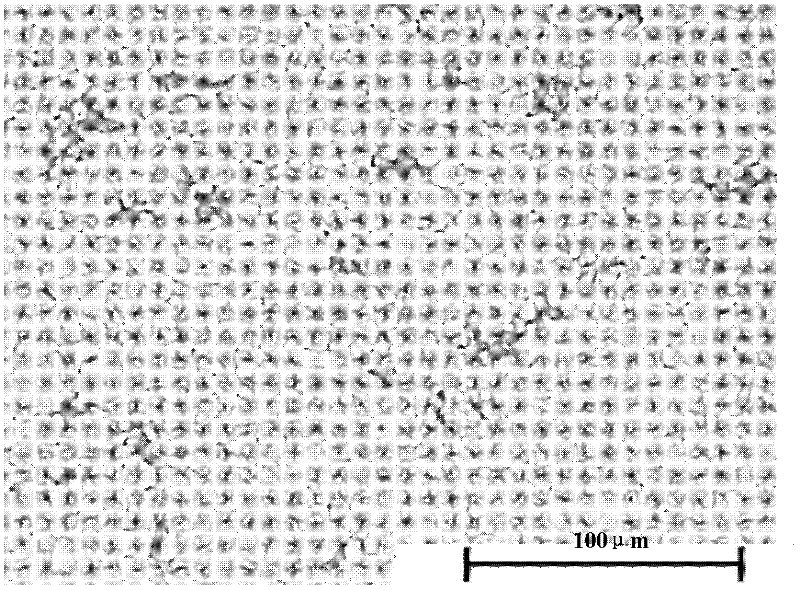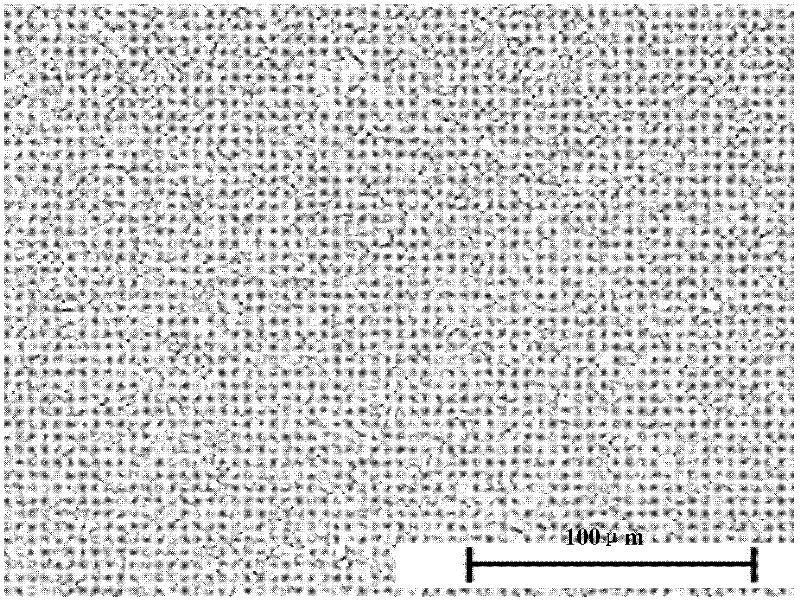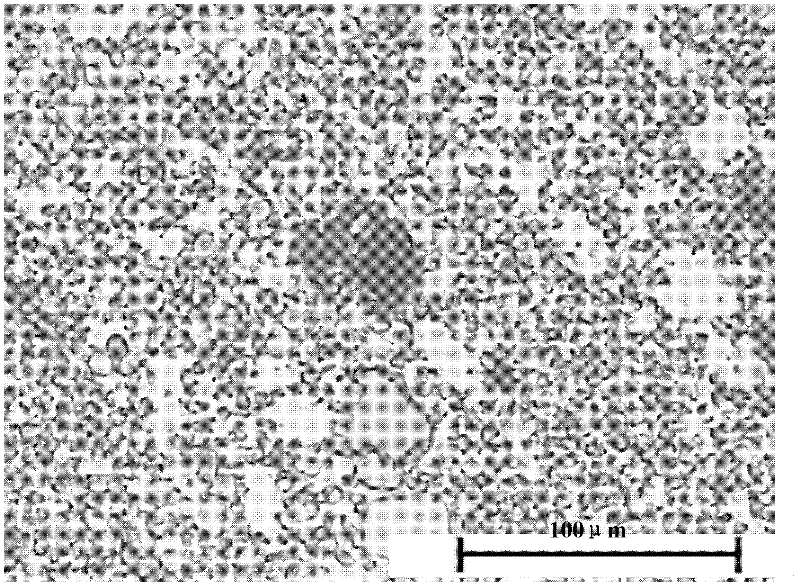Method for manufacturing tungsten-copper alloy rods and wires
A technology of tungsten-copper alloy and wire, which is applied in the field of material manufacturing, can solve the problems of waste of materials, high cost of tungsten-copper alloy rods and wires, and complicated process flow, so as to reduce energy consumption, stable product performance, and simple preparation process Effect
- Summary
- Abstract
- Description
- Claims
- Application Information
AI Technical Summary
Problems solved by technology
Method used
Image
Examples
Embodiment 1
[0026] The tungsten-copper alloy with a copper content of 28% and tungsten as the corresponding balance prepared by the infiltration process has a diameter of φ14.5±0.5mm and a length of 400mm. Take it out after heating in the resistance furnace at 900℃ for 20 minutes, and feed it into a Y-shaped rolling mill unit with a nominal roll diameter of φ220mm. After 4 continuous rolling, it is processed into a tungsten-copper alloy rod wire A with a diameter of φ10±0.2mm at one time, 4 passes The continuous rolling unit moves as a whole, and its pass pattern changes as circle → triangle → hexagonal → arc triangle → circle, and the linear speed of the roll diameter is: 79.2 m / min, 97.88 m / min, 119.86 m / min, 146.88 m / min . Continue heating in a resistance furnace at a heating temperature of 800°C in a hydrogen atmosphere for 20 minutes, take it out, and send it to a single-head rotary hammer machine for single-channel rotary hammer processing. Repeat the steps of heating + rotary hamme...
Embodiment 2
[0030] The tungsten-copper alloy with a copper content of 28% and tungsten as the corresponding balance prepared by the infiltration process has a diameter of φ14.5±0.5mm and a length of 400mm. Take it out after heating in the resistance furnace at 850℃ for 20 minutes, and feed it into a Y-shaped rolling mill unit with a nominal roll diameter of φ220mm. After 4 continuous rolling, it will be processed into tungsten-copper alloy rod wire A with a diameter of φ10±0.2mm at one time, 4 passes The continuous rolling unit moves as a whole, and its pass pattern changes as circle → triangle → hexagonal → arc triangle → circle, and the linear speed of the roll diameter is: 79.2 m / min, 97.88 m / min, 119.86 m / min, 146.88 m / min . Continue heating in a resistance furnace at a heating temperature of 750°C in a hydrogen atmosphere for 20 minutes, take it out, and send it to a single-head rotary hammer machine for single-channel rotary hammer processing. Repeat the steps of heating + rotary ha...
Embodiment 3
[0032]The tungsten-copper alloy with a copper content of 28% and tungsten as the corresponding balance prepared by the infiltration process has a diameter of φ14.5±0.5mm and a length of 400mm. Take it out after heating in the resistance furnace at 900℃ for 20 minutes, and feed it into a Y-shaped rolling mill unit with a nominal roll diameter of φ220mm. After 4 continuous rolling, it is processed into a tungsten-copper alloy rod wire A with a diameter of φ10±0.2mm at one time, 4 passes The continuous rolling unit moves as a whole, and its pass pattern changes as circle → triangle → hexagonal → arc triangle → circle, and the linear speed of the roll diameter is: 79.2 m / min, 97.88 m / min, 119.86 m / min, 146.88 m / min . Continue heating in a resistance furnace at a heating temperature of 800°C in a hydrogen atmosphere for 20 minutes, take it out, and send it to a single-head rotary hammer machine for single-channel rotary hammer processing. Repeat the steps of heating + rotary hammer...
PUM
| Property | Measurement | Unit |
|---|---|---|
| diameter | aaaaa | aaaaa |
| diameter | aaaaa | aaaaa |
| diameter | aaaaa | aaaaa |
Abstract
Description
Claims
Application Information
 Login to View More
Login to View More - R&D
- Intellectual Property
- Life Sciences
- Materials
- Tech Scout
- Unparalleled Data Quality
- Higher Quality Content
- 60% Fewer Hallucinations
Browse by: Latest US Patents, China's latest patents, Technical Efficacy Thesaurus, Application Domain, Technology Topic, Popular Technical Reports.
© 2025 PatSnap. All rights reserved.Legal|Privacy policy|Modern Slavery Act Transparency Statement|Sitemap|About US| Contact US: help@patsnap.com



